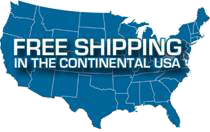Before the 10th century, coffee was eaten by wandering tribesmen in Abyssinia and Arabia. Crushing of seeds began circa 1000 AD. This is when the Arabs discovered how to prepare this hot drink with boiled water. The Arabs guarded their secret, but delighted Pilgrims smuggled fertile seeds out and so coffee began to spread grew in surrounding areas. By the 13th century, typical Arabian life was socially enhanced by coffee.
By 1615 voyagers returned to Venice with some of the Arabian's afternoon delight. Soon after, Roman clergy condemned coffee as a drink of the devil. Upon sampling coffee,Pope Clement VIII hoped to resolve the matter, only discovering for himself that coffee was delightful! Coffee was then blessed with Papal approval and spread throughout Italy. Not long after, the first European coffeehouses were opened. Recorded history next finds the first English coffeehouses in 1637 with Great Britain not far behind.
Up to the 17th century, almost all coffee came from Arabia, until a daring French navy captain smuggled out a fertile coffee plant and it went on to flourish in Martinique of the Eastern Caribbean Sea. In 1660 coffee arrived in North America courtesy of the Dutch at what we call New York today. In those days, tea was the mainstream drink, coffee only to be enjoyed by the affluent. That changed in 1773 at the Boston Tea Party when Americans led a tax revolt on tea and forged their new bond with coffee! Coffee became the national beverage - a position it still holds today, and coffee will always be considered a pantry staple as well as a luxury in American life.
Coffee Today
Since 1989, well-known "gourmet" coffee retailers have driven coffee beyond the "morning eye opener" to become a cultural necessity. Big cities across America, such as Seattle, trended coffee into consumption morning, noon and night, winter, summer, spring and fall. American coffeehouses seek to imitate European cafes where meeting for coffee is a daily social experience to read the news paper or discuss issues of the day. In contrast however, Americans often tolerate staled coffees, weeks to months old while Europeans demand fresh roasted coffees.
Worldwide demand for coffee has remained such that it is one of the most valuable commodities in the world trade. In terms of U.S. dollars, coffee is second only to petroleum in international commerce traded over several years. One third of all coffee exports are to the U.S. The over-all industry employs some 20 million people. Coffeehouses have popped up all around the U.S.A. since the 1980's. They serve as excellent alternatives to bars and taverns by providing cultural, stimulating environments.
Coded by Michael Adsit Technologies, LLC. - Content Copyright Two Rivers Roasting Co. 2014 - 2025


